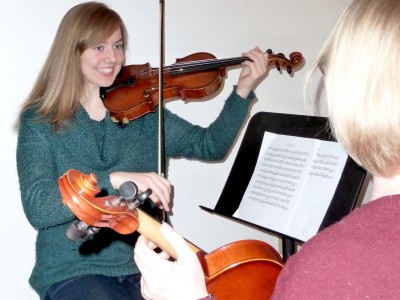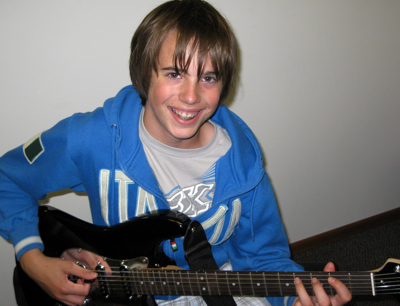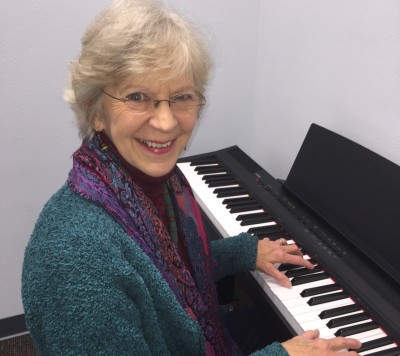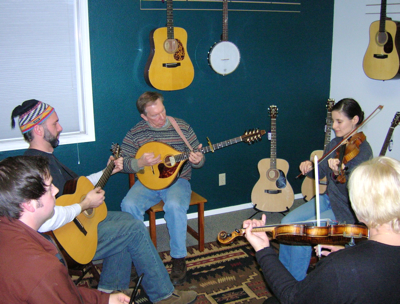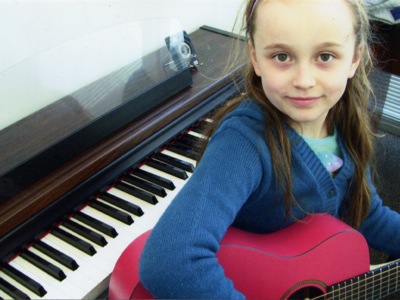FAQ
What are the costs and payment policies?
Do you work with charter schools?
What’s the typical lesson schedule?
When is my child ready for lessons?
I’m an adult. Is it too late to learn?
What’s a good instrument to start with?
I’m left-handed. What should I do?
Do you sell or rent instruments?
Electric guitar or acoustic?
Digital piano or acoustic?
How long does it take to learn an instrument?
How much should I practice?
Should I attend my child’s lessons?
Tuition and payment policies
Lessons are $42 per half hour, and there’s a one-time registration fee of $25 per family.
Tuition is payable from month to month via electronic debit from a checking or credit card account. Payments are processed on the 25th of each month for the following month. Payments may be cancelled through the 15th by email notification.
As a commercial studio, we can’t provide refunds or credits for lessons missed by students. Any lessons canceled by teachers will be refunded immediately.
Do you work with charter schools?
Yes, we are pleased to be vendors for all major charter school organizations including Mat-Su Central, IDEA, PACE, Twindly Bridge, Cyberlynx, Frontier, Raven and Denali Peak.
What’s the typical lesson schedule?
Lessons are scheduled at the same time every week, and most students do well with a half hour. If space is available, beginners can advance more quickly with half hour lessons twice a week, and adults are often happiest with hour lessons.
When is my child ready for lessons?
Children can progress with piano lessons as young as 4, and with guitar lessons and violin lessons around 6 or 7. Naturally, all children vary in development, so the only real way to find out is to give it a try. Lessons are paid from month to month so there is no significant commitment necessary to see whether a child is ready. If not, another year or so often works wonders.
I’m an adult. Is it too late to learn?
Not at all. It’s a myth that children learn faster. Most adults progress much more rapidly than children because they have more muscle strength, more coordination and more self-motivation. We routinely see beginners into their 70s find music a delight to learn.
What’s a good instrument to start with?
Nothing is easier than the piano and nothing is more inexpensive than a small keyboard. In terms of popularity and versatility, nothing approaches the guitar. The violin is generally considered a “difficult” instrument. But while it is true that the learning curve is a little longer, it is not physically demanding and most students who try it find they love it and actually enjoy putting in the extra time it can require.
In general, there is no reason for students not to start lessons with whatever instrument they are most attracted to.
I’m left-handed. What should I do?
Ignore it. We have several left-handed teachers who all play right-handed.
The reason is that there are no left-handed pianos, or violins, or horns, or anything else other than guitars. Only guitars are manufactured in quantities large enough to have invited introducing left-handed models. The downside to learning guitar left-handed is that you’ll forever be limited to the very small number of left-handed models for sale, and it’ll make it very difficult to go on to learn any other instrument.
Do you sell or rent instruments?
No. We’d recommend getting them from Matanuska Music.
Electric guitar or acoustic?
It depends entirely on what sort of music you or your child wants to play.
A frequent question from parents is whether to start children on electric guitars or acoustic guitars. Most kids interested in playing rock will obviously want an electric guitar, but there is a widespread idea that it is somehow better for them to start with a “regular” guitar.
We have no idea where this idea started. Acoustic guitars are generally much more difficult for beginners. They’re harder to hold because they’re bigger and wider, and harder to make notes and chords on because the strings are farther from the fingerboard and under more tension. Electric guitars are simply easier to play, and if a child wants to play rock styles there is no way to get a rock sound from an acoustic guitar.
So our recommendation to parents is always to consider what sort of music their child listens to and wants to play. If you’ve got a daughter infatuated with Taylor Swift who wants to strum chords and sing modern country music, she’ll want an acoustic guitar and will be inspired to overcome its initial awkwardness. If you’ve got a son into metal or classic rock, there’s absolutely no reason not to start with whatever electric guitar he thinks looks coolest.
Self-motivation is the most important factor in musical success, so shop with an eye for whatever guitar your child seems most excited about spending time with.
In terms of cost, there is very little difference. A small amplifier loud enough for any house can be purchased for around $100, and both electric and acoustic guitars are available in serviceable models for less than $200.
Finally, be very careful about buying used guitars unless you’re an experienced player. They’re very vulnerable to damage from cold and low humidity, and any guitar that’s been sitting unplayed for awhile is likely to have repair issues that wouldn’t be evident to a beginner. Guitars bought new will often require minor adjustments after a few weeks also, but that’s a service most stores will provide as part of the purchase.
Digital piano or acoustic?
For learning, it’s unnecessary to take on the expense(s) of an acoustic piano. Modern digital pianos sound good, play well, move easily and stay in tune forever.
After you’ve actually learned to play, you’re likely to want the unrivaled expressiveness of a good baby grand. And by that point you’ll know what you’re looking for in terms of tone. Which is a good thing, because you can’t just turn a knob to change it.
Buying a digital piano is easy. For young children, we recommend getting a cheap 61-key model. They’re almost indestructible, and kids love repeating songs in the voices of the various instruments they simulate.
Adults and advancing players will want a full-size 88-key digital piano with weighted keys, a fixed stand and damper pedals. These can be obtained at any local music store starting at around $600. You can easily spend four or five times more, but the inexpensive starter models are generally fine until you’re ready to upgrade to an acoustic piano or a full-featured synthesizer.
At some point, any serious student will want a real piano. Acoustic pianos have become a challenge to shop for now that the Anchorage market no longer supports an actual piano store. The only source for acoustic pianos now is Craigslist, and good instruments that are priced right tend to move rapidly. So before shopping, talk with an experienced piano tuner about different brands, sizes and price ranges, and make arrangements for this person to accompany you when you go to someone’s house to listen to anything that seems appealing. A piano technician can tell you very quickly how well an instrument has been maintained and identify any repair issues that would not be evident to a typical player.
A piano technician can also evaluate the sound quality of a piano in someone else’s house and offer at least an idea of how it might sound in the type of room where you plan to put it. The same piano will sound very different in different rooms, depending on things like size, windows, ceiling height, floor coverings and furniture. Shopping with an expert who has been to your house will dramatically improve your chances of finding a piano that sounds good there.
How long does it take to learn an instrument?
You can begin playing recognizable melodies from your first lesson. You won’t be fast, but you’ll be making music.
Some students are content to learn to read music and play a couple dozen easy songs, which can take only a few months. Others become motivated to perform at a semi-professional level or to make music an ongoing part of their social life, and many of these students will want lessons for several years.
How much should I practice?
You will improve in direct relation to the amount of time you practice, so the more the better.
Life being as it is, here are some tips:
In general, it’s better to play for just a few minutes several times a week than to wait until Sunday afternoon when you’ve got an hour or so to settle down. Brief daily contact with the instrument is better than one or two longer sessions. If you can find time for both, all the better.
In general, you should spend at least as much time improving (and enjoying) familiar material as you do working through new pieces. You don’t get better by learning new material so much as by becoming more accomplished at what you’ve already learned.
Should I attend my child’s lessons?
You are certainly welcome to. Some young children need help maintaining focus. Many others seem more attentive without a parent present, and older kids are likely to be self-conscious working through new material in the presence of an “audience.” Take your cue from your child.
We have no staff to supervise your children before or after their lessons, so we ask parents of young children to remain in the building during lesson times. Thanks!
